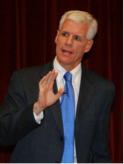Submitted by Denise Litke, Instructional Coach
The 2 Sisters Live in Calgary
Friday, Oct. 2 and Saturday, Oct. 3, 2015
It
seems like many teachers in FSD are talking Daily 5 and CAFÉ. So what’s the big deal? If you are like me, and other teachers who
have read the books (yes, both editions), gone to conferences and implemented
them into their classrooms, you may be asking . . . why aren’t you? I have to admit, the main reason I bought
into the Daily 5/CAFÉ is the credibility of
“the Sisters” - Gail Boushey and Joan Moser. They are in classrooms (and still are today),
trying things out, reflecting on their practice – both the successes and the
failures – and really listening to what the research is telling them about
student learning.
I have struggled with what information is important to
share with you on a blog, so after many stops and starts I have decided to give
you the key points as I see them.
Daily
5
The Daily 5 holds no Language Arts content. Our content comes from the Alberta Program of
Studies. The Daily 5 is a management
structure, which teaches children to work independently on 5 meaningful
tasks (Read to Self, Work on Writing, Read to Someone, Listen to Reading
and Word Work), so that the teacher can work with individuals and small groups
in response to their needs. What’s important?
Students need to read and write every day, so a Daily 3 or even a Daily
2 might be more conducive to what works in your class. Chunk your instruction –
brain research says if you are teaching ten year olds? Then, have ten minutes of instruction. Allow
for choice. This perpetuates engagement.
Daily
3 Math
Like the Daily 5, the Daily 3 Math holds no
content. It is a structure used to teach
students to be independent during math time, so the teacher can work with
individuals and small groups. Daily 3
Math Activities – Math By Myself, Math Writing, Math with someone – are the
“practice and reinforcement related to the current unit of study.”
CAFÉ
“The CAFÉ system is [their] method for integrating
assessment into daily reading and classroom instruction. CAFÉ is an acronym for Comprehension,
Accuracy, Fluency and Expanding Vocabulary.”
It is through the CAFÉ that reading strategies are introduced in each of
the previously mentioned areas and students apply and set goals around the ones
they use in order to become better readers.
Got you interested?
Want to learn more about the Daily 5, the CAFÉ, the Daily 3 Math? Then I
would encourage you to read the books, go to a conference or talk to colleagues
and others who are currently using it in their classrooms!

